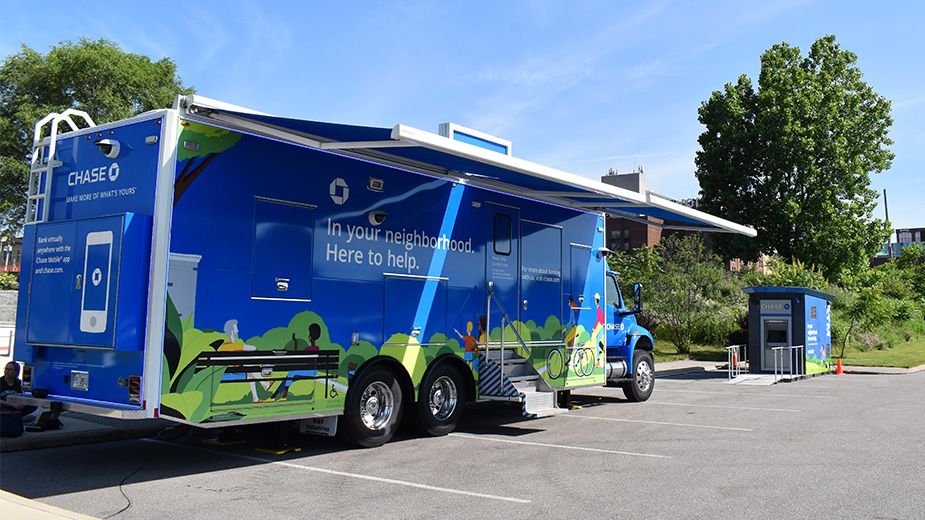Credit Unions Bank on Relationships with Members
YOUNGSTOWN, Ohio — Credit unions need a critical mass to remain independent and provide the financial services their members want.
The increasing number of regulations and cost of technology have compelled small credit unions with limited fields of membership to ask themselves: Can we remain independent? Or should we seek to merge with a similarly sized credit union? Or should we explore acquisition by a much larger credit union? Or should we liquidate?
Seeking a suitor, a much larger credit union, is a common approach. Cardinal Credit Union, based in Mentor, just entered the Mahoning Valley by acquiring the Tri-County, Youngstown City Employees and Edison credit unions. Combined, the three credit unions brought less than $15 million in assets to Cardinal, based in Mentor.
In the summer of 2015, Associated School Employees Credit Union, Austintown, acquired the Greater Warren Community Credit Union and Cavalier Credit Union in Trumbull County. Today it has assets of more than $130 million, more than 15,000 members and 35 employees.
And it was a year ago that Seven Seventeen Credit Union, today with assets of more than $900 million and 74,000 members, acquired the Kent Credit Union, Kent, with its $42 million in assets and 7,000 members. Seven Seventeen marketing director Eric Lanham stresses that most of the growth at his credit union has been organic, that is, generated internally. Acquisitions since its founding in 1957 have played a secondary role in its growth as the largest credit union in northeastern Ohio and third-largest in the state.
The Youngstown Firefighters Credit Union legally dissolved Sept. 15, says its last CEO, Jack Kodash, after receiving its charter from Ohio 63 years ago. The credit union had a limited field of membership, that is, it was closed to all but active and retired members of the Youngstown Fire Department and their immediate families.
According to BestCredit.net, Youngstown Firefighters had nearly 700 members, more than $3.5 million in assets and regulators deemed it well capitalized.
Kodash did not want to discuss what led to the decision to liquidate and the distribution of capital returned to the members.
All he would say beyond confirming that the members were paid their shares of the net assets was his assumption that they joined nearby credit unions with open fields of membership. Cardinal, ASECU and Seven Seventeen have open fields based on geography.
In 1960, 75 employees of Sawhill Tubular pooled $100,000 to form the ST Credit Union, today Pennstar Federal Credit Union in Hermitage, Pa. Pennstar has nearly 4,700 members and $42 million in assets, says CEO Pam Suber.
A closed-field credit union, Pennstar reflects the original goals of the credit union movement. The first manager ran the ST finances “out of the back seat of his car,” says Suber, who became CEO in 1996.
Pennstar had “$2 million [in assets] when I started,” she says. (Sawhill Tubular today is a division of Wheatland Tube, which acquired its assets in 2002.)
Pennstar is thriving, Suber says, as reflected by the satellite office it opens this fall on the square in Mercer. It opened its main office in a new building in 2001.
Because its field of membership is closed, she says, it offers lower rates on loans than credit unions with open fields. “We’ve resisted going community-based,” or open field, for that reason, Suber explains.
Along with many other credit unions, she sees Pennstar as part of the fight against payday lending. If asked, Suber and her staff will provide financial counseling.
Pennstar serves the employees of heavy manufacturers (such as Ellwood Crank and Machine, Sharon Tube, Mercer Forge and Wheatland), trucking companies (Chadderton Trucking and Yourga Trucking), federal and Mercer County government employees, Westminster College employees, medical offices and Joy Cone Co.
“No one is too little,” Suber says, noting the employees of a dental office belong.
Its size allows Pennstar to offer products banks no longer offer, such as Christmas Clubs, to the most modern technology, such as CardValet, which allows Pennstar members to download the app in Apple iTunes and Google Play.
“This app puts you in control of your debit card like never before,” its fall newsletter promises. “The free app that allows you to control how, when and where your debit card is used!” and to easily deny unauthorized use.
In 2011, it began offering its members with smartphones remote capture and to learn in real time the status of their Pennstar accounts.
“We are very member-oriented,” the CEO says. “We work hard to give the personal touch” and the relatively small size allows her, the six full-time employees and one part-time to provide it, she says.
Pennstar’s relationship with First National Bank of Pennsylvania allows it to provide members with the same services and access to their accounts that Seven Seventeen, ASECU and Cardinal offer with their shared branching and shared ATM network.
“We run our checking accounts through them,” Suber explains, and Pennstar members can use First National Bank ATMs without incurring a surcharge.
While it does offer auto loans and home equity loans, Pennstar does not offer mortgages.
The size of the credit unions in Ohio suggests they reflect the original goals of the movement. “The average size in Ohio is $92 million in assets,” says Mike Kurish, CEO of ASECU, “versus the national average of $211 million.” The number of faith-based credit unions, which tend to be small, contribute to the low average in Ohio, he suggests.
“There has been consolidation in the industry,” says Seven Seventeen’s Lanham. “And it will continue because of the costs of technology and regulatory compliance.”
“There is pressure to merge,” Kurish says, “but it has to make sense” for both the smaller and larger credit union. The Youngstown Firefighters Credit Union was well run, he says. Had it sought a suitor, the merger could well have benefited the acquirer more than the Firefighters members.
When ASECU is approached, Kurish says, he and his board review the proposal to ensure their credit union wouldn’t “take on too many of someone else’s problems.”
Members want credit unions to extend most services and conveniences banks offer. Credit unions work to build “on the great loyalty that exists,” Kurish says. “There’s a feeling of family. It’s a relationship that’s hard to sever.”
To reinforce loyalty, ASECU just began offering rewards points on purchases its members make with their MasterCard credit card and is exploring whether to extend rewards points to purchases made with the Visa debit card.
Rather than consolidate, credit unions are sharing their branches and ATMs with each other, Lanham says. Seven Seventeen, ASECU, Cardinal and Credit Union One in North Jackson allow their members to conduct business in the others’ offices as if they were using their own. And all of their members have access to 43,000 ATMs across the United States that they can use for free, just as if they were using their own.
“There’s no death knell for small credit unions,” Lanham says. “The industry is cooperative. We’re finding new economies of scale.”
Kurish points to “three new regulations this year on top of three regulations last year” that have raised compliance costs. “There are 55 to 60 major federal regulations now,” he says. “The government doesn’t distinguish based on size.”
The burden, both manpower needed and expense, is eased somewhat by CUSOs, or credit union services organizations, Lanham says.
CUSOs provide technical support, the ability to provide services and compliance support, he explains.
Regardless, Seven Seventeen has incurred the expense to provide the technology its members demand, says Brian Boettcher, its senior vice president for innovation and information technology.
“The millennials are more demanding of our electronic channels,” he says, “and our older members are adopting technology more and more.”
For a year, Seven Seventeen has offered thumbprint identification to ensure that the member accessing his credit union account on his smartphone is indeed that person.
“Digital wallet? We have that,” Boettcher says. Digital wallet allows the member, for free, to add Apple Pay, Android Pay and Samsung Pay to his smartphone.
With the many new delivery channels, financial institutions have reduced, but not abandoned, any delivery channel, Boettcher observes. Bricks-and-mortar offices remain, smaller in number but often open longer hours.
Debit cards have reduced the reliance on ATMs but cash remains a popular method of payment. And online payment systems have reduced the volume of checks mailed to utilities, department store and lenders.
People still empty the change in their pockets and purses into jars when they get home. When a jar is full, they take the coins to a bank or credit union to add to their savings account.
“Our coin-counting machine [in the headquarters on Larchmont Avenue] was used so much we had to replace it [last month],” the technology chief says.
“Our new one has double the capacity,” Lanham adds.
Copyright 2024 The Business Journal, Youngstown, Ohio.


